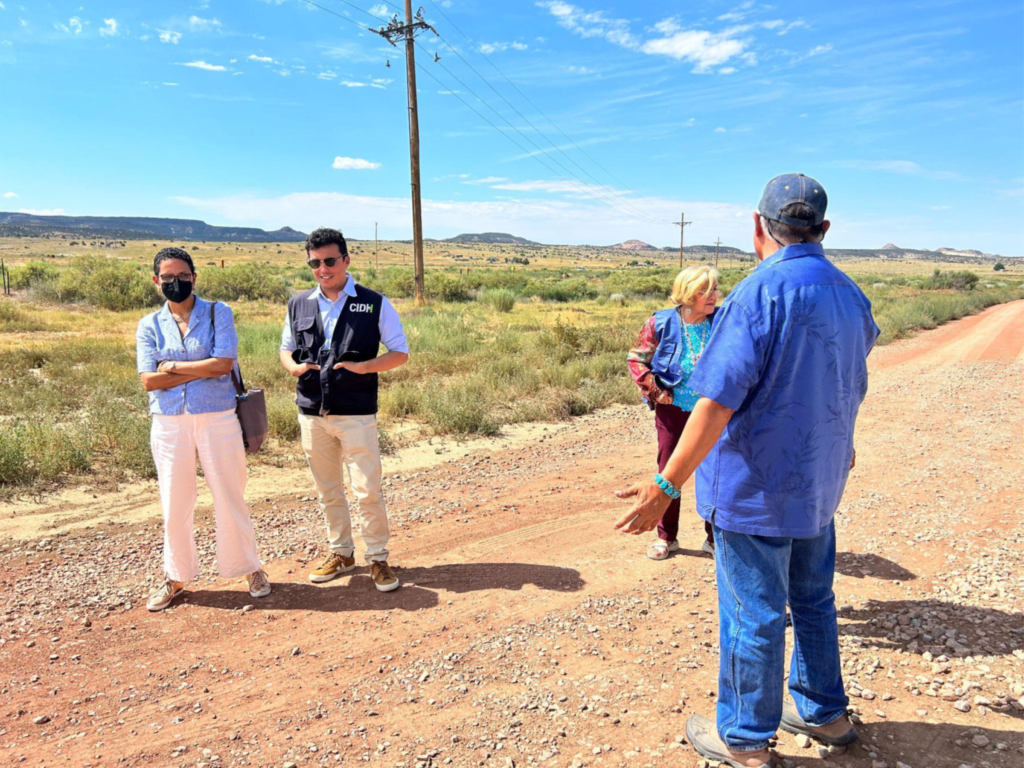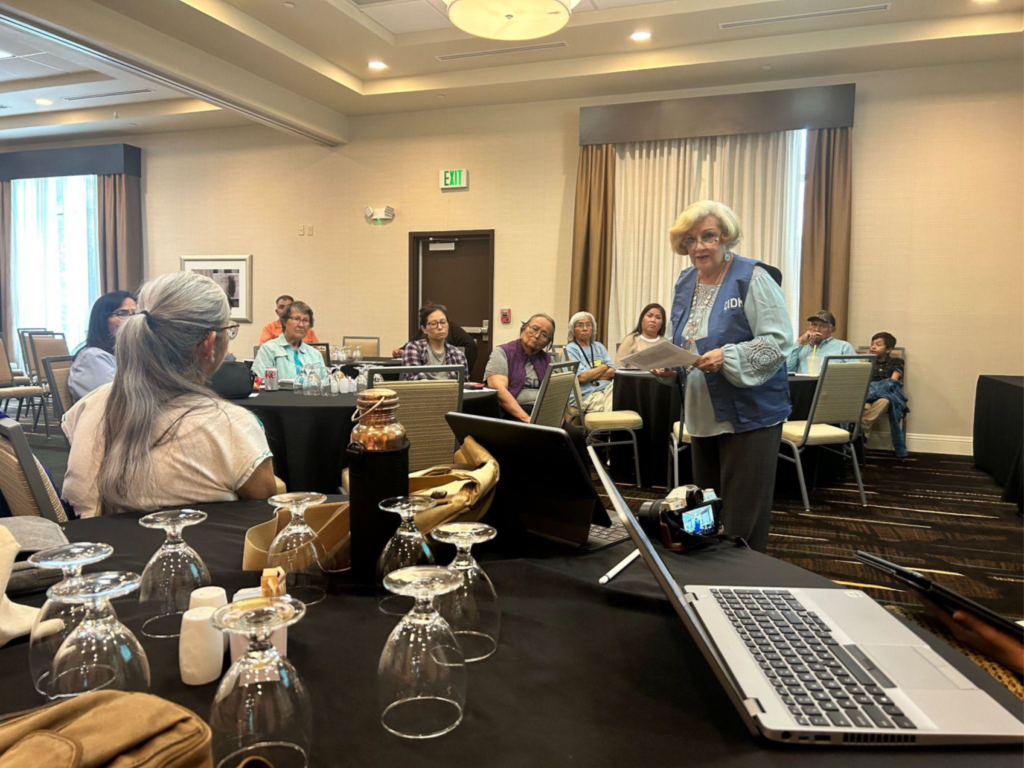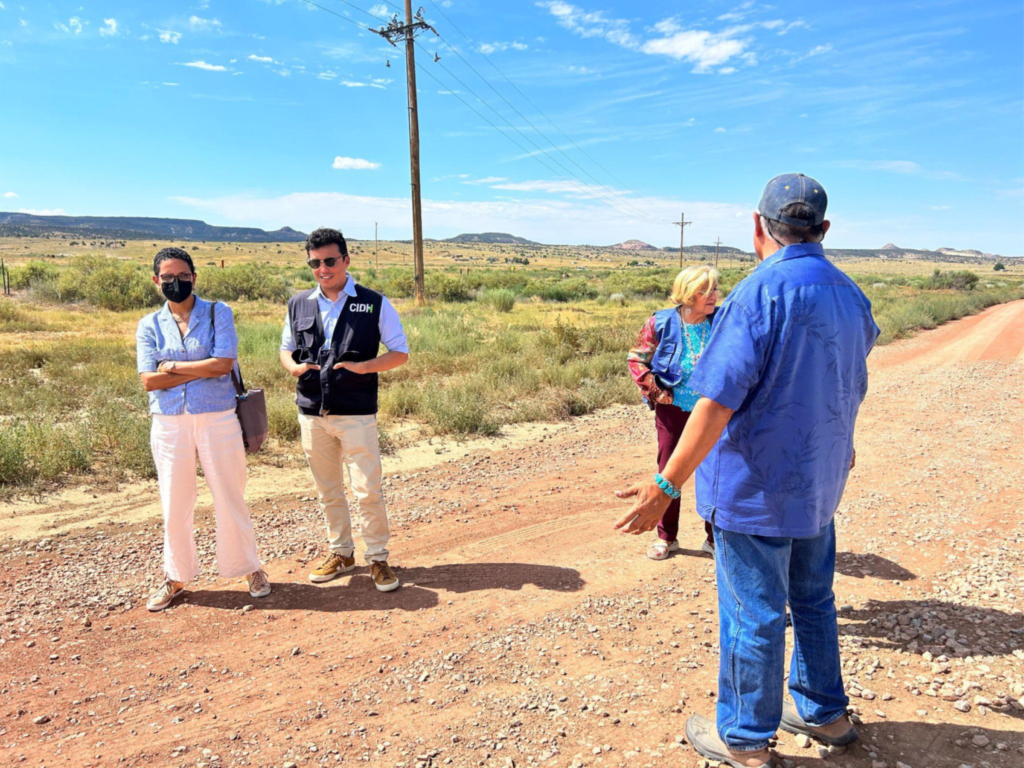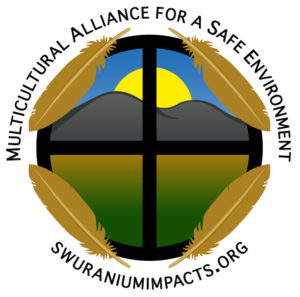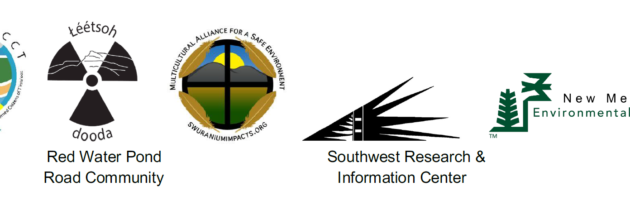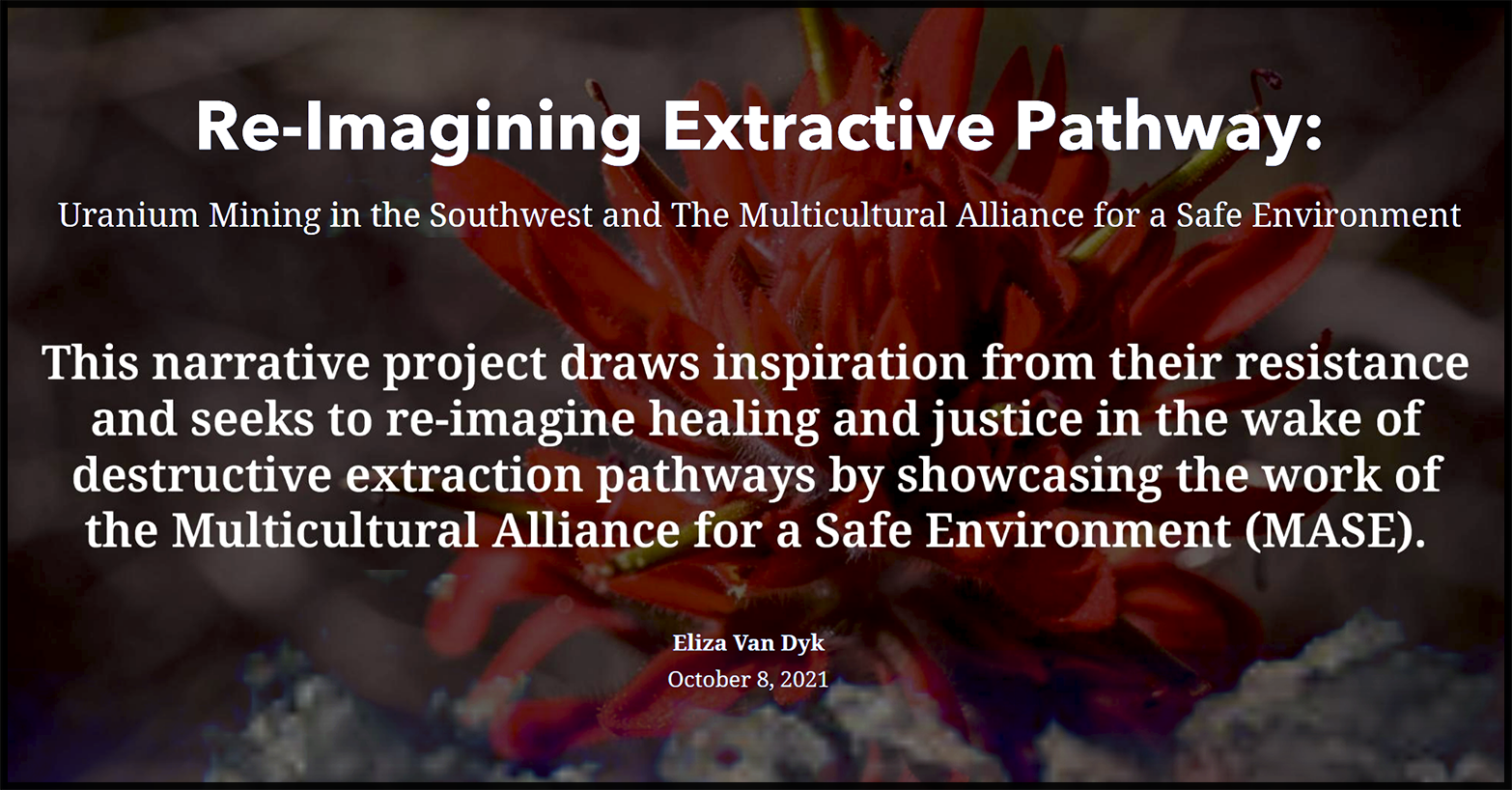Inter-American Commission on Human Rights (IACHR) Makes Historic Promotional Visit to Churchrock & Crownpoint
Commissioners See First-Hand Impacts from Uranium Mining & Milling to Pueblo and Diné Communities
Churchrock, NM—Eastern Navajo Diné Against Uranium Mining (ENDAUM) and Red Water Pond Road Community Association, with support from NMELC, Multicultural Alliance for a Safe Environment (MASE) and Southwest Research & Information Center (SRIC), hosted a four-person delegation from the Inter-American Commission on Human Rights (IACHR) during the last week of July at the Pueblo of Laguna, Churchrock and Crownpoint chapters of the Navajo Nation, and in Gallup, New Mexico.
The purpose of this unprecedented and historic “promotional visit” was for the Commissioners to see first hand the impacts uranium mining and milling have had on Indigenous communities in New Mexico and to provide information and education on the IACHR’s mission on behalf of 35 nations of the Western Hemisphere. IACHR is the adjudicatory arm of the Organization of American States.
IACHR Commissioner Roberta Clarke and Commissioner Esmeralda Arosemena de Troitiño and two IACHR Human Rights Specialists, Santiago Martinez and Laura Morelo, took a two-day tour through Laguna, Churchrock and Crownpoint to see the harmful impacts from uranium mining and milling. The tour was led by Chris Shuey from SRIC, along with Larry King, Jonathan Perry, Christine Smith, Edith Hood, Teracita Keyanna, June Lorenzo, Christine Lowry, Rita Capitan, and Eric Jantz. Spanish language translation to the Spanish-speaking IACHR commissioner was provided by Sylvia Ledesma.
The two-day tour included stops at the closed Jackpile Mine next to the Village of Paguate on the Pueblo of Laguna; the Homestake uranium tailings pile north of Milan, N; the site of the July 16, 1979 uranium mill tailings spill 10 miles north of Churchrock village; the Northeast Church Rock Mine (formerly operated by United Nuclear Corporation and now owned by General Electric Co.); the Quivira Churchrock I Mine site, and the Crownpoint Uranium Project processing plant in Crownpoint. (No uranium is being processed at this plant.)
The delegation also enjoyed a meal with a family in Seama, one of the six main villages of the Pueblo of Laguna, and watched traditional dances at the Seama Feast Day. The IACHR officials heard testimonials from Diné community members about the trauma of living for more than 50 years sandwiched among three uranium sites at a potluck gathering at the Red Water Pond shade house. The tour wrapped up in Gallup with a presentation by IACHR Commissioners Clarke and de Troitiño on “Inter-American Standards on Racial Discrimination and Indigenous Peoples Rights.” Please contact NMELC if you would like to receive a copy of the IACHR slideshow. The training was followed by a reception emceed by Jonathan Perry.
“It was clear the visit had a tremendous impact on the Commissioners,” said NMELC Senior Staff Attorney Eric Jantz. “They were able to see and better understand the toxic legacy of uranium mining our clients and communities have been dealing with for decades; how challenging the struggle is to protect clean water from uranium companies and weak regulatory agencies; and they saw the resilience and tenacity of the communities fighting for their right to enjoy a healthy life for their families, something every human being is entitled to. At some of the stops, uranium readings were twice as high as background, which understandably alarmed the Commissioners.”
After the promotional visit, on August 11, ENDAUM and NMELC submitted another request for a Thematic Hearing on impacts from uranium mining and milling on Indigenous peoples for the next IACHR 188th Period of Sessions, which will be held in Washington, D.C., October 30 through November 10, 2023.
Jonathan Perry, Director, ENDAUM, said, “Having the IACHR commissioners and staff come to our Diné communities for their promotional visit was crucial to their understanding the lasting impacts of the uranium mining legacy and to comprehend the complexity of our lands within Eastern Navajo Agency of the Navajo Nation. We intended to educate the IACHR delegation on how our communities are still in the midst of contamination that needs to be addressed while our efforts to prevent further threats from new proposed uranium extraction projects continue simultaneously.”
Edith Hood, Red Water Pond Road Community, said, “I am thankful to the IACHR Commissioners and staff for coming to see and hear us in Gallup, and also, better yet coming to the Red Water Pond Road community and seeing for themselves what we talk about. We urge our local tribal, state and federal leaders to do the same.”
Chris Shuey, MPH, SRIC, said, “The Commissioners got to see with their own eyes the close proximity of uranium mine wastes to Native homes and fields, and to listen to the stories of community members about health problems that date back three to four generations. They also learned how community members from Laguna to Churchrock and beyond are advocating for inclusion of Post-1971 uranium workers in expansion of the federal Radiation Exposure Compensation Act. They were particularly moved by June Lorenzo’s talk on how the Federal Government forced uranium development on Pueblo and Navajo people without their free, prior and informed consent in the 1950s and ‘60s.”
Eric Jantz, Senior Staff Attorney, NMELC, said, “The Commissioners’ historic promotional visit to Laguna and the Navajo Nation was an important opportunity for the Commissioners and their staff to see firsthand the effects of the United States’ uranium development and cleanup policies on frontline communities. It was also an opportunity for community members to learn about the Inter-American human rights framework and how they can use it to hold governments accountable.”
Dr. Virginia Necochea, Executive Director, NMELC, said: “We are grateful to the IACHR for prioritizing this promotional visit to uranium-impacted communities and for taking the concerns of our clients and community members seriously. NMELC remains committed to working alongside our clients and the larger community in demanding appropriate clean up, in seeking remediation efforts, and in continuing to protect clean and limited water resources.”
